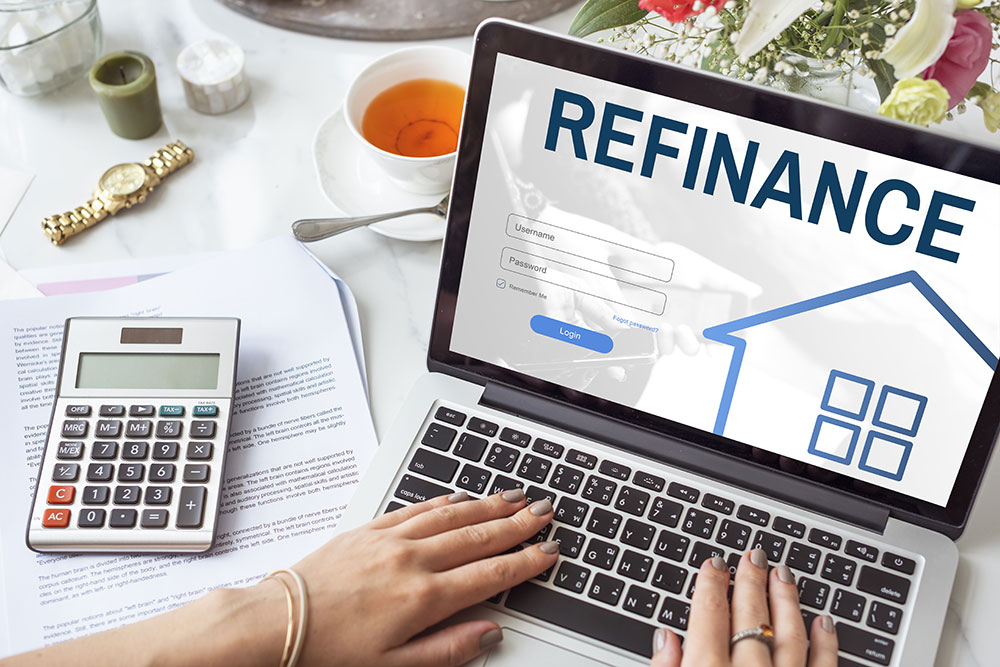Table Of Content

Most mortgage applicants seek a 30-year, fixed-rate mortgage because it’s often more affordable than a 15- or 20-year mortgage. A 30-year mortgage refinance might be right for you if a shorter-term mortgage is out of your budget or you’d like to save some cash while making mortgage payments. Conversely, refinancing a 30-year mortgage into a shorter-term home loan means you will pay off your mortgage faster. Along with certain economic and personal factors, the lender you choose can also affect your mortgage rate. Some lenders have higher average mortgage rates than others, regardless of your credit or financial situation. Refinancing typically resets the length of your mortgage to 15 or 30 years.
15-Year Mortgage Refinance Rates: Compare Current Rates - Business Insider
15-Year Mortgage Refinance Rates: Compare Current Rates.
Posted: Thu, 18 Apr 2024 15:16:00 GMT [source]
What’s the purpose of the refinance calculator?
"was easy to upload documentation, i got a great rate, and am extremely happy with the service." Bankrate has partnerships with issuers including, but not limited to, American Express, Bank of America, Capital One, Chase, Citi and Discover. Here are some common situations when you might consider refinancing. Victoria Araj is a Section Editor for Rocket Mortgage and held roles in mortgage banking, public relations and more in her 15+ years with the company. She holds a bachelor’s degree in journalism with an emphasis in political science from Michigan State University, and a master’s degree in public administration from the University of Michigan. Predicting how long your refinance will take can be challenging, but the typical timeline is 30 – 45 days.
What Is Mortgage Refinancing?
It also indicates how much of each payment goes toward the principal balance versus the interest. A cash-out refinance takes advantage of the home equity you’ve built over time and gives you cash in exchange for taking on a larger mortgage. Your desired cash-out amount is the amount of money you hope to pocket after borrowing more than what you owe on your mortgage. Borrowers with FHA loans must refinance into a conventional loan in order to get rid of their mortgage insurance premium, which can save hundreds or thousands of dollars per year.

Understanding Refinances
Typically, it is worthwhile to refinance if the reduction in total interest expected to be paid over the life of the loan is greater than the cost of acquiring the loan. See expert-recommended refinance options and customize them to fit your budget. Here’s a quick look at the types of refinances that may be available to you. Your first step is to apply online or talk to a Home Loan Expert and see what your personalized rate could be.
How soon after closing can I refinance?
For example, if you only expect to own the home for a few more years, you likely won’t save enough on mortgage payments to justify the costs of refinancing. It may also not be worth refinancing if the total costs and fees result in a significant blow to your finances. Mortgage points are a type of prepaid interest that you can pay upfront — often as part of your closing costs — for a lower overall interest rate. If you’re looking to lower your monthly payments, shrink your interest rate, shorten the term of your loan or change your loan type, a refinance could be the right move for you. A vast majority of US homeowners already have mortgages with a rate below 6%. When you refinance, you apply for a new mortgage to pay off your current one.
Determine if refinancing your mortgage is right for you.
Check out some of our best HELOC lenders to start your search for the right loan for you. You’ll then need to input your current mortgage balance and current value of your home, plus more information depending on your refinance goal. Your credit score and whether or not you’re a veteran will both influence your refinance options.
Current Refinance Rates by State
Homeowners still have time to lower their monthly mortgage payments by refinancing, as mortgage rates are still relatively low. Rolling the closing costs into your refinance loan will increase your monthly payments. Mortgage refinancing is when a homeowner takes out another loan to pay off—and replace—their original mortgage. A mortgage refinance calculator can help borrowers estimate their new monthly mortgage payments, the total costs of refinancing and how long it will take to recoup those costs.
Most people refinance to take advantage of lower rates, get lower monthly payments or tap into their home’s equity. Our mortgage refinance calculator helps estimate your new monthly payment and the difference in total interest costs. Depending on your lender, you might have the option of a no-closing-cost refinance, where these fees are rolled into your total loan amount. However, you’ll likely end up with a slightly higher interest rate—and you’ll be paying interest on your closing costs. Your break-even point is a measure of how long it takes to recoup your refinance closing costs. Try our mortgage refinance calculator to see if refinancing makes sense.
Gather Documents And Apply
But you might be compelled to refinance anyway — as part of a divorce settlement or to switch from an adjustable-rate mortgage to a fixed-rate loan, for example. When you shorten the loan term — from 30 years to 15 years, for example — you almost always end up with a higher monthly payment, even with a lower interest rate. That's because you'll pay principal (the amount you borrowed) over fewer months.
Instead of the lender paying the home’s seller, it pays off the balance of your old home loan. You’ll pay the lender back based on the amount of your new mortgage. In some cases, you can get a no-closing-cost refinance so you don’t have to bring any money to the table. Be aware that closing cost is then paid over the life of the loan in the form of a higher rate.
You then receive the difference between the two loan amounts in cash. Your rate will be different depending on your credit score and other details. Let us estimate your rate and help you reach your financial goals. Keep in mind that while some lenders offer rate locks for free, others charge a fee, especially for longer rate-lock periods. It's also likely that you'll need to have your home appraised as part of the refinancing process. The appraisal helps the lender determine what the home is worth when underwriting a new loan.
As the city's tourism and business travel rebound post-pandemic, the hotel is capitalizing on its location and unique offerings. Various amenities, from The Stayton Room bar and restaurant to 3,000 square feet of meeting space, cater to business and leisure travelers. On-property retail amenities such as Crunch Fitness and Starbucks further enhance the experience.
At closing, you’ll go over the loan details and sign your loan documents. You’ll also pay any closing costs that aren’t rolled into your loan. If your lender owes you money (for example, if you’re doing a cash-out refinance), you’ll receive the funds after closing.

No comments:
Post a Comment